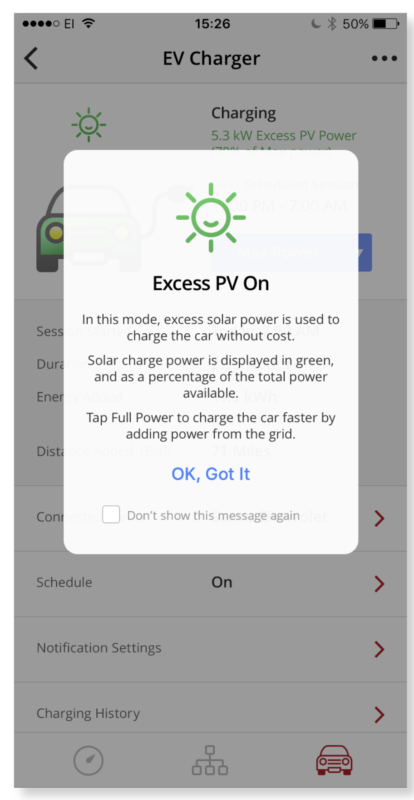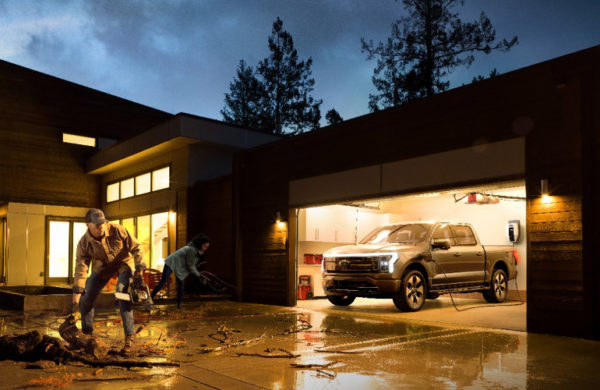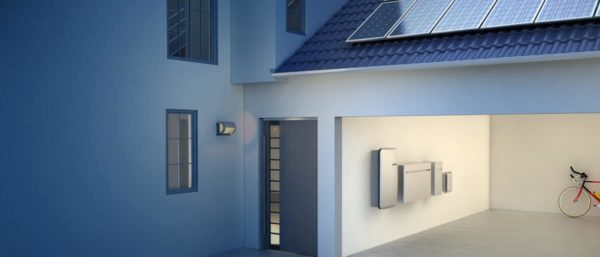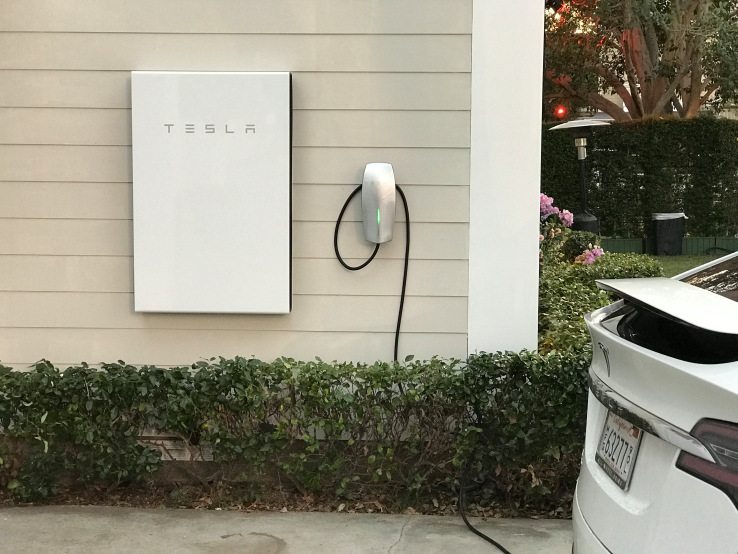In our pv magazine USA Solar 101 series, we’ve discussed the major components that make up a solar power project: solar panels, the inverters, and the racking.
However, there are some accessories to these basic items that are becoming more important every day. Three important technologies on this list are car chargers, batteries, and electrical panels.
We already discussed how many solar panels are needed to generate enough electricity for a new electric vehicle; however, charging it is another story! Your solar inverter manufacturer plays a big role in how your electric car is charged.
EV chargers
Inverter manufacturer SolarEdge clearly believes car charging is going to be a massive part of the future, as all of their new inverters include car charging capability. The company believes in this future so much that they’ve bought both a battery company and an electric car company, and are selling components to larger automotive companies.
 SolarEdge’s car charging solution comes with a feature specifically designed for charging cars with solar power; they called it “Excess PV”. What this means is that when the sun is up, the inverter prioritizes solar power for the house, offsetting any onsite electricity usage. The available “Excess PV” electricity is then directed to the car – and, importantly – prevents charging from the power grid (which is typically fueled in part by fossil fuels.)
SolarEdge’s car charging solution comes with a feature specifically designed for charging cars with solar power; they called it “Excess PV”. What this means is that when the sun is up, the inverter prioritizes solar power for the house, offsetting any onsite electricity usage. The available “Excess PV” electricity is then directed to the car – and, importantly – prevents charging from the power grid (which is typically fueled in part by fossil fuels.)
Of course, homes using large amounts of electricity may need to occasionally charge a vehicle with fossil fuels, but the smart inverter is designed to maximize the miles covered by sunlight.
A solar power project from Tesla will almost certainly come with an option to buy a car charger, a battery, and, naturally, a car. The company said that it’s working to more fully integrate this ecosystem, but is still in the early stages of that process. For now, you can add a Tesla car charger to any solar power project you install, regardless of whether or not that project is from Tesla.
In addition to these suppliers, several third-party car charging solutions are available for purchase. One technical difference to consider is whether you need a Level 1 or a Level 2 charger, which refers to the rate at which you charge. A Level 1 charger outputs about three to five miles of driving range per hour. A Level 2 charger can push between 12-60 miles of range per hour of charge.
In addition, a Level 1 charger is little more than a power cable with a standard 120V wall plug on one end and a car plug on the other end. A Level 2 charger plugs into a high-voltage outlet, similar to a clothes dryer or an induction stove. In addition, a Level 2 charger requires additional gear in order to be considered legal and permanent.

Chargepoint, a leading seller of Level 2 chargers, has put together a handy guide describing the differences between Level 1 and 2 charging.
V2H and other storage options
EV charging is still in its infancy, and we can expect more innovations. One prominent feature on the horizon is “vehicle to house” better known as “V2H”. V2H allows an electric vehicle to act as a backup generator, powering your home in an emergency via the car’s battery.
Recent headlines were made when Sunrun partnered with Ford on the all electric F-150 Lightning. The vehicle will be sold with an 80 amp (this is really big) car charger. The system will be designed to allow a home to run off of the enormous – greater than 100 kWh – battery system in the vehicle. That’s enough juice to run a typical home for several days.

Image: Ford
Home energy storage is a hot topic, and most homeowners getting solar are also interested in batteries. Currently, battery storage does not pay itself off in most places, because most electricity companies don’t offer sufficient financial support for home energy storage. However, people who want a backup power source seem willing to accept that compromise.
With that in mind, it’s important to consider the amount of battery storage a home might actually require.
An average home uses about 10,000 kWh of electricity per year, which is about 27 kWh a day. A solar power system that is sized to meet 100% of your energy needs will generate roughly that much electricity, but with significant seasonal variances.

Image: Enphase
A battery backup system can be sized in many different ways. Some battery sizing considerations regularly used are:
- Do we backup the entire house, or, say, the lighting and the refrigerator?
- Do we back it up for 15 minutes or for three days?
- How much does the solar power system supplement the battery backup based on its relative size?
These questions require another article altogether, so ask your contractor to help you with this. On a positive note, most energy storage systems currently available on the market will back up a whole home for at least a few hours.
Electrical panel upgrades
Home automation, control systems, and smart electric panels are closely related to these battery backup and car charger questions and seek to seamlessly optimize your home electricity usage.
Generally, these components are installed between a solar power system, batteries, and the electricity consuming appliances in your home.

Recently, Span entered the market with an electric panel that gives circuit level control from your smartphone. This means that when an electricity event hits, preprogrammed tools will shut down circuits immediately and automatically, saving your electricity usage and allowing the battery to last as long as possible.
Sonnen energy storage systems can do pretty much anything a Span panel can do, plus run an entire housing community with its batteries. If given a choice, the ecolink from Sonnen would be in this author’s home. The unit monitors weather conditions, the price of energy, and home use patterns in order to optimize almost anything in a home that can be optimized, from closing windows to shutting off the AC when you leave the house.
With today’s available gear, a solar + Sonnen + car charger home is about the most advanced electrical management available for the home market.
This content is protected by copyright and may not be reused. If you want to cooperate with us and would like to reuse some of our content, please contact: editors@pv-magazine.com.









27kWh average day electricuty usage is insane. The average UK usage is 8-12kWh. So perhaps a first step to sustainability is to bear down on usage – with more efficient appliances and lighting.